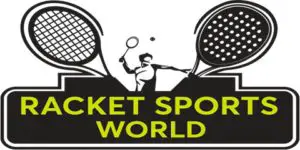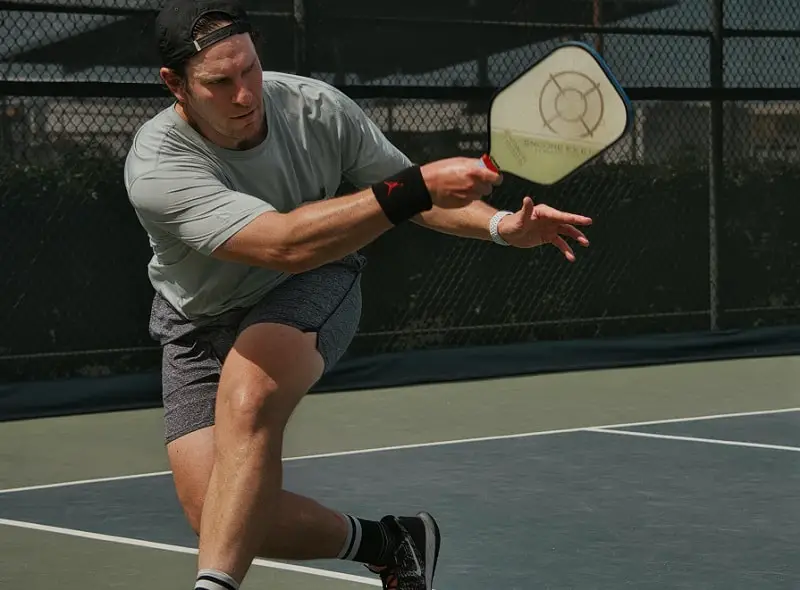When it comes to designing and building a pickleball court, there are a number of factors to take into consideration. Do you have enough space, do you have the budget, are you going to be playing often enough, and importantly, which surface do you want on your pickleball court.
While the court dimensions are standard, the court playing area is standard, and the markings, lines and net on a pickleball court must all meet strict regulations, you can choose which kind of surface you want on your pickleball court.
Some of the things you need to consider before deciding on your pickleball surface are:
- Is your court an outside or an indoor court?
- Is the court going to be used for professional or recreational purposes?
- Will you be teaching kids / adults on the court?
- How often will the court be used?
- What is your budget like?
- Can you afford a pickleball contractor?
- Are you going to build your own pickleball court?
- How are your knees?
The last question is actually a serious one.
Some people pay extra for their pickleball courts, adding a specialist softer, an almost cushioned surface, so there is no jarring on their knees. There are options though, especially when a pickleball court is built for you by a contractor.
So the big question now is which surface can one play pickleball on?
Your options when it comes to the floor surface of a pickleball court are:
- On a tennis court.
- Clay.
- Asphalt.
- Concrete.
- Polyurethane sports surfaces, with or without cushioning.
- Grass.
When it comes to building over concrete, and you are going with a pickleball contractor, you can choose a few different surfaces. These include:
- A liquid applied coating with rubber granules.
- A base that has single layer shocks.
- A poured-in-place surface.
- Cushioned surfaces.
Also Read:
When we suggested you need to consider your knees above, and we were not kidding, that is when you look at a polyurethane sports cushioned surface.
This would be when the pickleball courts are contracted out and specially designed, and you get to choose your surface.
Let’s take a look at the individual options.
Table of Content
Indoor Pickleball Courts
An Indoor pickleball court will be designed and built by contractors and generally make use of polyurethane sport surfaces, which by the way can be used for outdoor courts too.
This kind of surface includes a sturdy rubber mat that is built over a flat or concrete surface, one that creates a cushion, reducing impact and stress on the player’s knees, ankles, feet, and body in general.
There are different levels of cushioning, or coating, and some can absorb as much as 32% of the absorption shock.
This is where your contractor will give you advice or suggestions on the depth of the surface, and whether you are going for single layer shock absorption or a better cushioned surface.
When it comes to an indoor court, it is unlikely you will build your own, and should use a licensed contractor. There are some DIYers who could build their own pickleball court though, so just follow the rules and regulations.
Let’s take a look at the cushioned surface, noting there are a variety of similar options on the market and we are just giving you the general information.
Pro-Cushion Surface
This is the choice for the ultimate pickleball court.
It’s all about a level surface that gives a consistent bounce, but is also super comfortable for the player with effective shock layers for the body. It is a durable surface offering the most resilience for a player, and the most comfortable game.
A pro-cushion surface is an acrylic coating system, with build in cushioning, including flexible acrylic blinders or granules that provide the cushioning.
- Smooth and consistent.
- Good traction and grip.
- Long lasting and durable.
- Suitable for beginners and professionals
- Looks and feels good.
- Excellent for the body with low impact on joints.
Outdoor Pickleball Courts
If you are designing a backyard pickleball court, for your own use, you either go for grass (mentioned above but not the most highly recommended surface), asphalt (only if you have no other choice), concrete if it is already laid out or if you are prepared to lay it out, or as above, concrete with a polyurethane sports surface on top of it.
These surfaces are good for all weather, and are made for low impact and so that you do not trip.
What you choose all depends on if the court is being designed for your own home use, or if you are building pickleball courts for a club, school or recreation centre.
If the court is going to be used for teaching, club play, leagues or professional use and tournaments, you want a decent surface. This would be done by a contractor, unless you are using ready made tennis court surface.
When a contractor does your pickleball courts, the surface is generally going to be a specially designed polyurethane sports surface, with the options of extra cushioning or not. The cushioning system is known as a pro-cushion surface.
Also Read:
Acrylotex
This is a court surface used on indoor or outdoor courts that is laid over concrete or asphalt. There are a few different types and they do have different surface textures on offer, depending on the grip you want. Presumably, for pickleball, you want a good grip.
Plexiflor
This is a smoother acrylic coating that has been reinforced and can also be used over concrete or asphalt. It is textured, non abrasive and also good for all weather.
An acrylic surface helps in the following ways. It
- Minimises a surface glare.
- Keeps the concrete well preserved.
- Offers a consistent bounce and game.
- Is safe and good for grip, offering a custom designed texture.
- Contains silica sand for grip.
- Is environmentally friendly, with a low VOC.
Pickleball flooring can be laid by yourself if you are experienced in laying down flooring.
As long as you have a concrete, or hard and flat surface, you can buy the rubber matting and lay it down on your own. Some expertise is required. If you are not going the rubber flooring route, you can look at either Acrylotex or Plexiflor.
Pickleball on a Tennis Court
If you have tennis courts at a school, club or recreation centre, it is fairly easy to build pickleball courts on to the tennis court.
The surface remains the same. While four pickleball courts can fit on to a tennis court, it is recommended you do not more than two, three at a push to allow space for players.
You only need to add temporary lines and a pickleball net that comes from a kit, so as not to spoil the tennis courts when you need them for tennis. Tennis courts generally have a hard surface already, although are sometimes clay or grass, both of which are suitable for pickleball.
Read more about how to play pickleball on a tennis court in our exhaustive guide here.
Pickleball on a Grass Surface
As long as your grass is compacted and offers a hard surface – it might take a lot of mowing, levelling, and then, constant playing to keep it this way – you can play pickleball on a grass surface.
Many people who have backyard pickleball set ups use grass if a grassy space is available to them.
The problem with grass is that it does not remain consistent, unless you really maintain the upkeep of the hard, level surface, so it can make the game inconsistent.
Which is why, typically, pickleball isn’t played on grass and even if it is, it’s more restricted to the recreational variety.
Read more about how to play pickleball on grass in our exhaustive guide here.
Pickleball on a Clay Surface
Again, this is not the most preferred surface but if you have no other option, use clay! After all, you need to play pickleball!
If you have access to a clay tennis court, pickleball will be fine on this as the surface will already be strong and even. If you are playing on your own backyard clay, try and get the surface as level and even as possible, with the clay well rolled all over the surface, to ensure a consistent bounce.
Read more about how to play pickleball on clay in our exhaustive guide here.
Final Words on Different Pickleball Surfaces
A proper pickleball court should have a concrete base with either a specialist rubber polyurethane surface, with or without cushioning, or a concrete base with an acrylic coating on top of it for consistency, grip and traction, such as the surface of a tennis court.
Pickleball can be played on a plain concrete surface, if there is no choice it can be played on grass or clay, but ideally, it should be played on a professional smooth and durable concrete surface, with either a polyurethane surface or a specialist acrylic coating.


